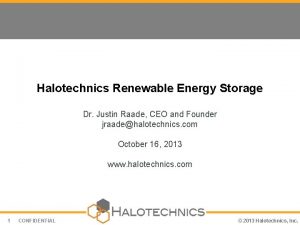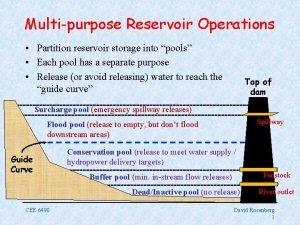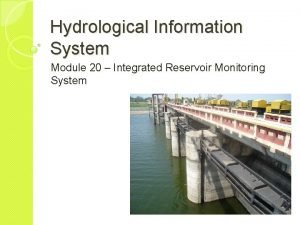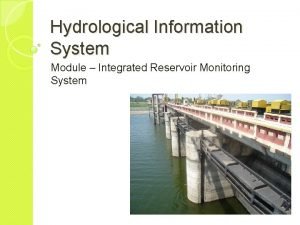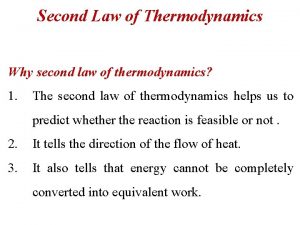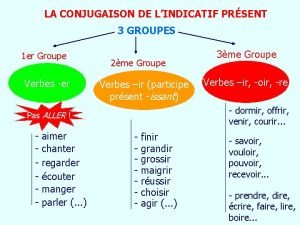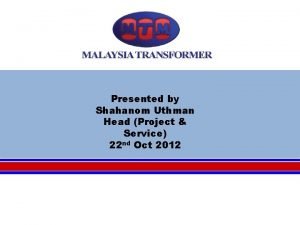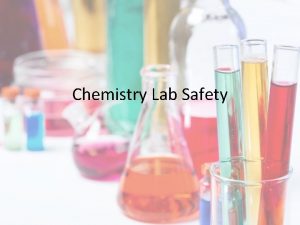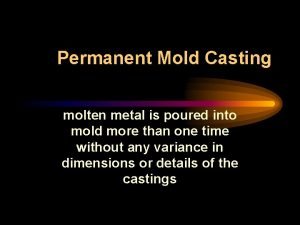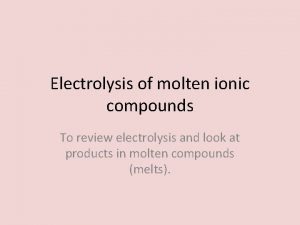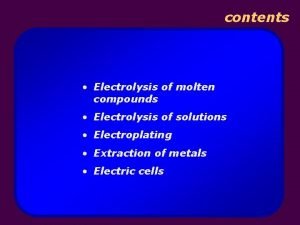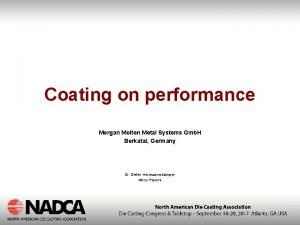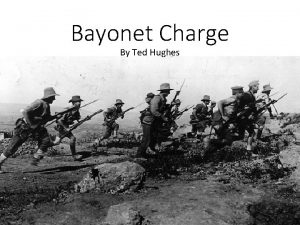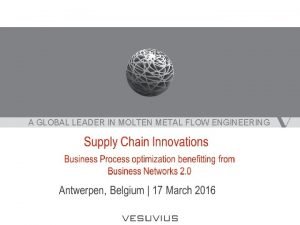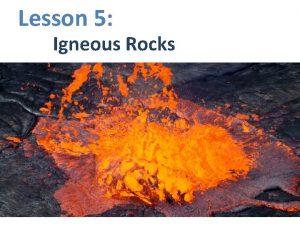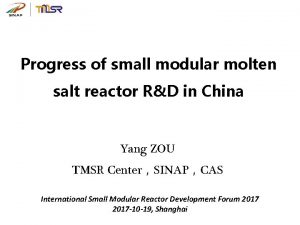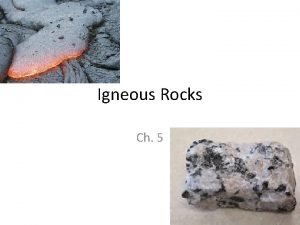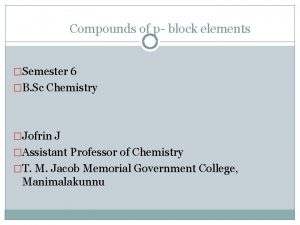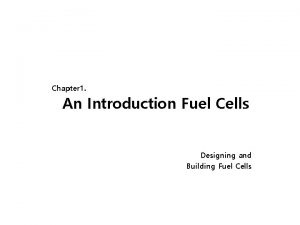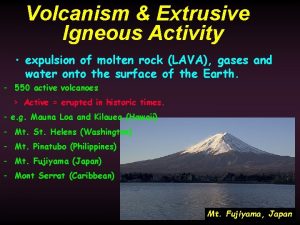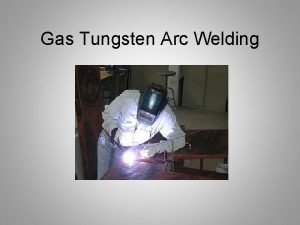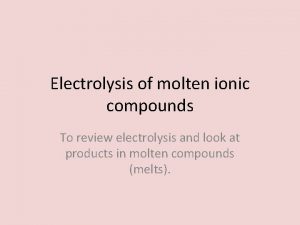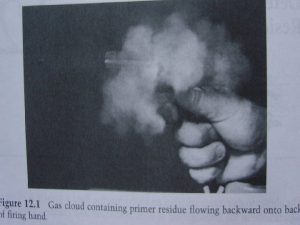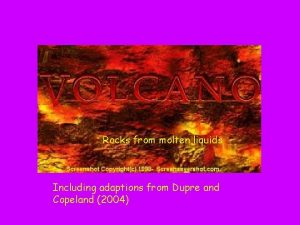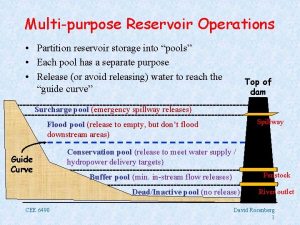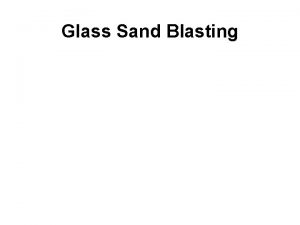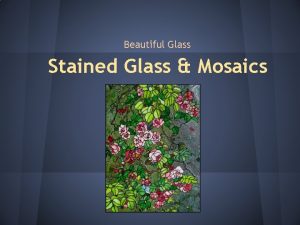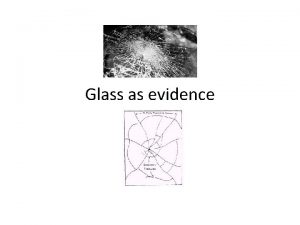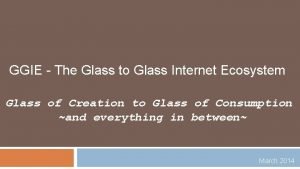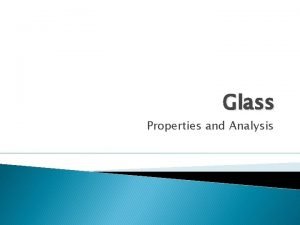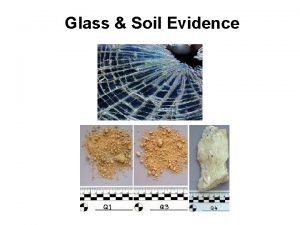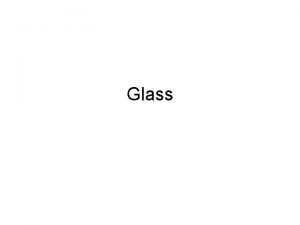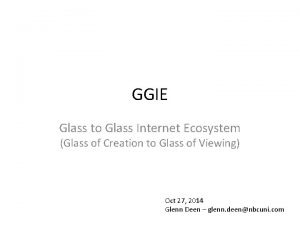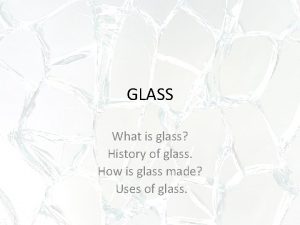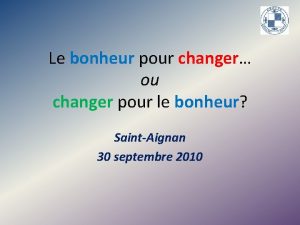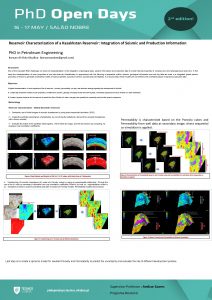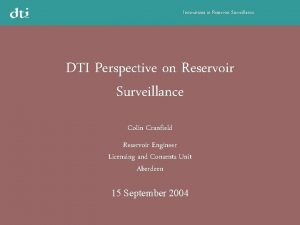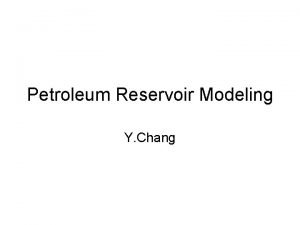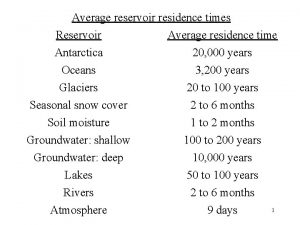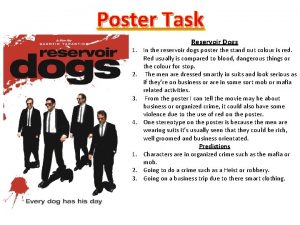Molten Glass Energy Storage Reservoir Halotechnics Game Changer












































- Slides: 44

Molten Glass Energy Storage Reservoir Halotechnics Game. Changer Stage Gate Review Dr. Justin Raade, CEO and Founder Matt Jonemann, Engineering Manager December 17, 2014 www. halotechnics. com 1 © 2014 Halotechnics, Inc.

Phase 1 work: Heat pump Electricity Motor High Quality Heat Stored Generator steam turbine compress 400 °C Waste Heat air in air out 2 200 °C expander © 2014 Halotechnics, Inc.

Phase 1 work: Commercial feasibility 3 © 2014 Halotechnics, Inc.

Phase 1 work: Conclusions 1. Equipment needed for high temperature heat pump is technically feasible but not commercially available 2. Reducing cost is #1 priority in energy storage market 3. Electrical resistive heater and molten salt energy storage has nearterm commercial opportunities 4. Molten glass energy storage may further reduce storage cost 4 © 2014 Halotechnics, Inc.

A new energy storage platform • Molten glass enables new energy storage platform > Inherently cheap storage material (low $/k. Wh) > 4 x storage density vs. molten salt (high k. J/L) • New storage applications > Low cost electrical energy storage > Greater flexibility in gas turbines by storing heat at full combustion gas temperature > Low carbon steam production Charging • Electrical energy • Combustion 5 Discharging • Molten salt • Air • Steam © 2014 Halotechnics, Inc.

Integrate into existing thermal power plants Inject heat further upstream: • Higher temperature (higher efficiency, higher energy density) • Leverage more existing equipment (lower capex) Heat Recovery Steam Generator 1600 °C Typical combined cycle power plant with heat injection points 50 °C 600 °C Gas Turbine Generator 95 °C Steam Turbine Generator 540 °C 6 Fire. Boost. TM Heat. Boost. TM Steam. Boost. TM (molten glass, TBD) (molten glass) (molten salt) © 2014 Halotechnics, Inc.

Showstoppers to molten glass energy storage Lessons learned from previous work with phosphate and vanadium based glasses Showstopper Solution 1. Pumpable glass manufactured cost too high Use soda lime glass, Na 2 O-Ca. O-Si. O 2, ~$200/ton 2. No practical containment material Use zirconia ceramics, proven for years with soda lime glass 3. No interface to power block Control heat release with salt or air, no glass pumping Halotechnics has unique capabilities and can build on previous experience to develop practical molten glass energy storage 7 © 2014 Halotechnics, Inc.

Molten glass energy storage reservoir Air Inlet Air Outlet Molten Glass Refractory Lining Ceramic Insulation Electrode Heaters Tank Shell Patent pending 8 © 2014 Halotechnics, Inc.

Market driven design • Decentralized generation (20 -50 MW) is the correct size for procurement > Utilities have built hundreds of natural gas peaker plants in this size range • Sufficient discharge profile (4 hours duration on 3 consecutive days) to qualify for “capacity payments” > Utilities pay for standby power, available upon demand. > Typical payment is in $/k. W-month regardless of hours of operation • Use the minimum required storage output duration > Reduces capex required to qualify for capacity payments • Plant must last >10 years for good project economics Commercial viability requires 20 -50 MW, 4 hours storage plant with minimum 10 year life 9 © 2014 Halotechnics, Inc.

Dimensions and storage capacity 22 m Base-case design: Top View 22 m • Glass reservoir sized for 2000 ton inventory (common in glass industry) • Square footprint (22 m x 22 m) to reduce surface area and cost • 1. 8 m (72”) glass pool depth is feasible with standard furnace designs Front View 1. 8 m 10 At target ΔT of 500 °C, design can store 400 MWht, enough for 40 MWe, 4 hours storage © 2014 Halotechnics, Inc.

Base-case design: Process flow diagram Patent pending 11 © 2014 Halotechnics, Inc.

Capital cost budget • Given revenues from capacity payments and estimated O&M costs, how much capital cost can we allow and still achieve an acceptable IRR? Target 10 -15% IRR requires furnace costs <$25 -30 million Assumptions: • 40 MW, 4 hours storage • Glass inventory: $0. 4 million • Soft costs (project development, permitting): 5% capex • O&M costs: 2% capex annually • Rebuild furnace every 10 years • $10/k. W-month capacity payments Molten glass shows promise as commercially viable energy storage technology 12 © 2014 Halotechnics, Inc.

Differentiated solution Credit: Bloomberg New Energy Finance, 2014 Molten glass enables differentiated technology roadmap 13 Steam. Boost. TM Heat. Boost. TM (molten salt) (molten glass) © 2014 Halotechnics, Inc.

Technical challenges 1. Glass properties suitable for storage 2. Charging 3. Storing 14 > Inherently low cost and stable > Electrode heater power > Electrode heater lifetime Risk Profile: Feasible ! Need Game. Changer! > Heat losses through tank walls ! 4. Thermal cycling ! 5. Discharging thermal energy from glass > Thermal shock to refractories > Thermal expansion of tank > Achieving high heat flux > Controlling discharge rate > Heat transfer to power block © 2014 Halotechnics, Inc.

Glass properties Glass could be used as a stable, low-cost thermal energy storage media 15 • Glass cullet (sorted, recycled glass) available in millions of tons annually at <$200/ton • Want low-iron clear glass for better radiative heat transfer from bulk (<0. 1% Fe 2 O 3) Property Value Typical composition by weight (soda lime window glass) 73% Si. O 2, 14% Na 2 O, 9% Ca. O, 4% Mg. O, 0. 15% Al 2 O 3, 0. 1% Fe 2 O 3 Heat capacity (Cp) 1. 45 k. J/kg-K Density (ρ) 2300 kg/m 3 Maximum temperature stability (alkali volatilization) 1500 -1600 °C Softening point 700 -800 °C Typical clear glass cullet © 2014 Halotechnics, Inc.

Charging It is feasible to achieve 40 MW heating power or more with standard electrodes 16 • Molten glass is a good electrical conductor • Electric glass melting furnaces up to 300 tons/day in commercial use • Molybdenum electrode heaters can last for entire furnace campaign (7 -10 years) © 2014 Halotechnics, Inc.

Storing: heat losses through tank walls Tg It is feasible to achieve <5% heat losses per day with standard insulating materials • • Thin AZS refractory layer for corrosion resistance • ~18” firebrick layer for low-cost, resilient insulation. Forms “self sealing” cold zone • • 17 Assume 2000 ton glass inventory (size of large commercial float glass furnace) Steel shell for structural strength Additional external insulation to reduce heat losses T 1 T 2 T 3 T 4 T 5 T 6 Ta 1500 °C Tank temperature Molten Glass Air 25 °C AZS refractory Firebrick Insulation <0. 6 k. W/m 2 heat losses Steel shell © 2014 Halotechnics, Inc.

Thermal cycling Must verify that refractory can withstand 2000 thermal cycles (10+ year life) • Refractories can typically withstand some thermal swings, for example due to idling a furnace over the weekend • High temperature ramp rates result in higher stresses • ASTM standard for thermal shock resistance measures strength after repeated, rapid cycling from 1200 °C to room temperature ! > Too severe to predict behavior for our system 18 © 2014 Halotechnics, Inc.

Refractory thermal cycling and corrosion tests • Test thermal cycling first, then corrosion resistance (will be a trade-off) > Chromia (Cr 2 O 3), zirconia (Zr. O 2), and alumina (Al 2 O 3) fused-cast refractories are most corrosion resistant > Sintered refractories are most shock resistant > Can tailor composition and manufacturing process to achieve better overall performance • 1500 °C 1000 °C 4 hrs Thermal cycling profile Test refractory samples in lab furnace > Thermal cycling: 6 cycles per day, repeat ~200 x for 1 year accelerated life > Corrosion: Isothermal test with glass > Assess mechanical strength and/or corrosion rate of samples • Select refractories with guidance from commercial vendors > Durital, Monofrax (RHI) > Zirchrome (Saint-Gobain SEFPRO) 19 Refractory samples after 1500 °C corrosion test (courtesy RHI) © 2014 Halotechnics, Inc.

Discharging: adequate heat flux Must verify ability to achieve 4 -8 hour discharge times with reasonable furnace geometries • Target 100 MWt heat transfer rate from glass to meet 4 hr discharge spec • Requires ~200 k. W/m 2 from glass pool ! > Easier at 1500 °C. Harder at 1000 °C. • Must promote good convection > Bubblers > Convoluted flow path > Turbulent flow • Must promote good radiation > Use clear (low iron) glass 20 >200 k. W/m 2 heat transfer © 2014 Halotechnics, Inc.

Thermal design and modeling • Verify key performance metrics via iterative design and modeling > Heat discharge rate > Heat losses > Thermal expansion of refractories 21 • Leverage existing regenerator designs for cooling air flow • Optimize glass pool depth for tradeoff between heat losses and discharge performance • Mature modeling software available from glass industry Refractory checker-brick regenerator © 2014 Halotechnics, Inc.

Budget and timeline Phase 2 Task or Milestone 1 2 Phase 3 3 4 5 6 7 8 1. Thermal cycling testing of refractories Refractory selection with guidance from established vendors Develop test methodology (ramp rate, soak time, temperatures) Perform thermal cycling tests Evaluate results. Verify that some candidates survive intact. 2. System design System specifications based upon market need Preliminary design Toll Gate: Thermal cycling pass, preliminary design feasible 3. Corrosion testing of refractories Refractory downselection with candidates from previous phase Develop test methodology (ramp rate, soak time, temperatures) Perform corrosion tests Evaluate results. Verify that some candidates survive intact. 4. Thermal modeling to verify desired charge and discharge rates Build model based upon design developed in previous phase Vary parameters (flow path, gas composition, gas velocity) Iterate design and verify desired discharge rate 5. Final report to document results of experimental work and modeling Toll Gate: Corrosion test pass, sufficient discharge rate feasible • $425, 000 budget, 8 month project in two phases > Phase 2: $250, 000. Refractory thermal testing and system design. > Phase 3: $175, 000. Corrosion testing, thermal modeling and design iteration. 22 © 2014 Halotechnics, Inc.

Follow on plan Pilot plant with strategic partners at location TBD • 23 Typical utilities require minimum of 1 MW plant with 1 year of operational data to be considered “proven technology” © 2014 Halotechnics, Inc.

Extra slides 24 © 2014 Halotechnics, Inc.

Outline 25 • Halotechnics overview • Market need for storage • Summarize Phase 1 results • Molten glass energy storage • Technical risks are real but can be mitigated with Game. Changer project © 2014 Halotechnics, Inc.

Halotechnics, Inc. – Corporate Profile Low cost energy storage is the key to abundant clean energy • Halotechnics: An industrial technology company focused on molten salt and molten glass systems > We offer engineering design services, equipment, and proprietary salt materials to our customers > Founded in 2009 as a spin-out of Symyx Technologies (SMMX), the pioneer of high throughput chemistry > 22, 000 salt mixtures screened to date, patents filed on novel materials and system designs • Select Partners and Customers Financing > $6. 5 million in federal grants from NSF, DOE, NREL, and ARPA-E (2009 -2014) > $1. 05 million subcontract from Alcoa (2014 -2016) > $1. 5 million contract from CEC pending (2015 -2017) • Organization > Headquartered in Emeryville, California > 12, 000 square foot chemistry and engineering labs > 12 -person team with molten salt and energy experience (engineers, chemists, power sector professionals) 26 © 2014 Halotechnics, Inc.

Halotechnics Product Markets Heavy oil upgrading Reliable wind power Glass manufacturing Renewable peaker plant Steel manufacturing In-situ oil shale conversion Aluminum smelting Thermal Electricity Storage 27 Energy Waste Heat Recovery © 2014 Halotechnics, Inc.

Halotechnics Products • Halotechnics products were developed by screening over 23, 000 unique mixtures • We aim to deliver value-driven products from industrially available chemicals. Saltstream and Haloglass Enabling a new class of applications in extreme heat www. halotechnics. com/products 28 © 2014 Halotechnics, Inc.

Broad experience with glass at Halotechnics (b) (a) High throughput glass chemistry screening (b) Graphite piping from molten glass test loop after testing at 1100 °C (c) Proprietary vanadium -based glass (d) Proprietary phosphate-based glass 29 (c) (d) © 2014 Halotechnics, Inc.

k. W 5 5 k. W Experience with molten salt systems HOT TANK • • • 30 Pilot scale 700 °C molten salt thermal storage system (30 k. Wh, 2, 000 kg salt, proprietary chloride composition) Funded by $1 million NREL Sun. Shot Incubator award (2012 -2013) Executed aggressive 15 month project schedule, from design to experimental data © 2014 Halotechnics, Inc.

Renewable energy needs electricity storage 12, 000 MW of storage is needed in California alone 46, 000 44, 000 42, 000 40, 000 From Storage 38, 000 36, 000 12, 000 MW 34, 000 32, 000 30, 000 28, 000 26, 000 24, 000 22, 000 20, 000 Electricity Demand (MW) Demand minus solar and wind 0: 00 1: 30 3: 00 4: 30 6: 00 7: 30 9: 00 10: 30 12: 00 13: 30 15: 00 16: 30 18: 00 19: 30 21: 00 22: 30 0: 00 Time of Day (2020 projected load) 31 © 2014 Halotechnics, Inc.

Gathering momentum for storage 32 © 2014 Halotechnics, Inc.

Our competition cannot meet the need Batteries – too expensive Peaker plants – CO 2, NOx pollution Pumped hydro – can’t site it Compressed air – can’t site it 33 © 2014 Halotechnics, Inc.

Phase 1 work: Down-selected plant schematic Generator Charging Discharging steam turbine 565 °C Electricity Waste heat (optional) 34 290 °C © 2014 Halotechnics, Inc.

Charge Initial charge: glass at 1000 °C Charge via electrode heaters immersed in glass 35 © 2014 Halotechnics, Inc.

Store energy Fully charged. Glass at 1500 °C 36 © 2014 Halotechnics, Inc.

Initial discharge Discharge via convective and radiative heat transfer to cooling gas Add bubblers in glass to reduce stratification Must control gas outlet temperature Target air outlet temp: 600 °C 37 © 2014 Halotechnics, Inc.

Final discharge Fully discharged. Glass returns to 1000 °C 38 © 2014 Halotechnics, Inc.

System layout Energy can be delivered with air to the power block for electricity generation Boiler Electricity In 39 Generator Electricity Out Blower Air Intake Energy storage Steam Turbine Air Outlet Heat transfer Energy conversion © 2014 Halotechnics, Inc.

Budget justification Item Description Cost Direct Labor labor rates $70, 500 Overhead and Fringe Benefits rent, legal, patents, SG&A, benefits $70, 500 Materials and Supplies refractory samples, glass samples $4, 000 Equipment N/A Travel visit glass engineering firm, glass modeling firm, test lab Consultants glass chemistry, test method development Subcontracts $10, 000 $6, 000 $264, 000 Thermal cycling test lab $53, 000 Glass engineering firm $94, 000 Glass corrosion test lab $57, 000 Glass modeling firm $60, 000 TOTAL ($) • $0 $425, 000 Aggressive project scope and timeline requires staffing of experienced professionals > 0. 4 FTE Project Manager (thermal/mechanical engineer) > 0. 4 FTE Staff Scientist (chemist) > 0. 2 FTE CEO (system architecture, techno-economic analysis) 40 © 2014 Halotechnics, Inc.

Market-driven deliverables Commercial Requirement Technical Deliverable Phase Decentralized power generation Design plant with 20 -50 MW rated power Phase 2 >10 year plant life At least one commercially available refractory suitable for lining the glass reservoir. Suitability is defined as less than 50% loss of strength (as measured by the modulus of rupture) after 200 thermal cycles. Phase 2 >10 year plant life A wall design that can tolerate repeated thermal expansion cycles Phase 2 <10 hour charge duration Electrode heater arrangement that can charge glass inventory with >40 MW of heating power Phase 2 >10 year plant life At least one commercially available refractory suitable for lining the glass reservoir. Suitability is defined as less than 10 mm/year measured corrosion rate. Phase 3 4 hour discharge duration Adequate heat flux from the glass during discharge in order to achieve a discharge duration of four hours (defined as >200 k. W/m 2 heat transfer rate from glass surface at maximum and minimum operating temperatures of glass) Phase 3 • 41 Note: Technical deliverables above are for base-case design: 40 MW, 4 hour storage plant with a glass pool 22 m x 1. 8 m, operating between 1500 °C max and 1000 °C min © 2014 Halotechnics, Inc.

Plant lifetime • Assume plant with following dispatch profile (similar to natural gas peaker plants) > Every day in the spring months: Mar, Apr, May 90 days > Every day in fall months: Sep, Oct, Nov 90 days > Once every 7 -10 days in other months: 20 days • 42 Typical year sees 200 days of use. Therefore 10 year life requires an estimated 2000 charge/discharge cycles © 2014 Halotechnics, Inc.

From spec, to design, to model • Halotechnics to perform: > Energy storage market knowledge and customer outreach > Refractory testing method development and glass selection > System specification (design concept, footprint and tank sizing, PFD) • Tentative subcontracts: > Mo-Sci (refractory thermal cycling and corrosion testing) > TECO (preliminary design based upon spec) > Glass Service (thermal modeling based upon preliminary design) Market constraints Available refractories System specification Preliminary design Thermal modeling Validated design Iterative feedback 43 © 2014 Halotechnics, Inc.

Steam. Boost project potential Deploy Steam. Boost and Heat. Boost at plants nationwide • • 1100 MW of boost potential in California 10, 000 MW nationwide Data obtained from http: //Global. Energy. Observatory. org/ 44 © 2014 Halotechnics, Inc.
 Justin raade
Justin raade Dead storage in reservoir
Dead storage in reservoir Reservoir monitoring system
Reservoir monitoring system Reservoir storage monitoring system
Reservoir storage monitoring system A thermal energy reservoir (ter) has
A thermal energy reservoir (ter) has Tous ensemble il me semble
Tous ensemble il me semble Verbe 2 groupe
Verbe 2 groupe Captain underpants name changer
Captain underpants name changer Ticket changer
Ticket changer Twitter zeronnn
Twitter zeronnn Automatic tool changer ppt
Automatic tool changer ppt Le monde est en train de changer
Le monde est en train de changer Mon dieu donne moi la sérénité d'accepter
Mon dieu donne moi la sérénité d'accepter Ron muhlenkamp
Ron muhlenkamp Transformer conservator airbag
Transformer conservator airbag Garnenia
Garnenia Amadeus ticket changer
Amadeus ticket changer Glass ceiling glass escalator
Glass ceiling glass escalator Does hot glass look the same as cold glass
Does hot glass look the same as cold glass Does hot glass look like cold glass
Does hot glass look like cold glass Transferring of data from auxiliary storage to main storage
Transferring of data from auxiliary storage to main storage Secondary storage vs primary storage
Secondary storage vs primary storage Uses rigid metallic platters
Uses rigid metallic platters Object based and unified storage
Object based and unified storage Energy energy transfer and general energy analysis
Energy energy transfer and general energy analysis Energy energy transfer and general energy analysis
Energy energy transfer and general energy analysis Lost wax pattern
Lost wax pattern Keep chaos at bay
Keep chaos at bay In permanent mould casting, the molten metal is poured
In permanent mould casting, the molten metal is poured Binary molten compound
Binary molten compound Electrolysis of molten ionic compounds
Electrolysis of molten ionic compounds Noltina stabil crucible
Noltina stabil crucible Bayonet charge structure
Bayonet charge structure Metal flow engineering
Metal flow engineering Rock guide with pictures
Rock guide with pictures China thorium reactor progress
China thorium reactor progress Magma is often a slushy mix of molten
Magma is often a slushy mix of molten Electrolysis of molten icl
Electrolysis of molten icl Alligator shears torture
Alligator shears torture Molten carbonate fuel cell
Molten carbonate fuel cell Tambora eruption
Tambora eruption Electrolysis of a molten salt with the formula mcl
Electrolysis of a molten salt with the formula mcl Preflow welding definition
Preflow welding definition Panic electrolysis
Panic electrolysis Dermal nitrate/paraffin test procedure
Dermal nitrate/paraffin test procedure
